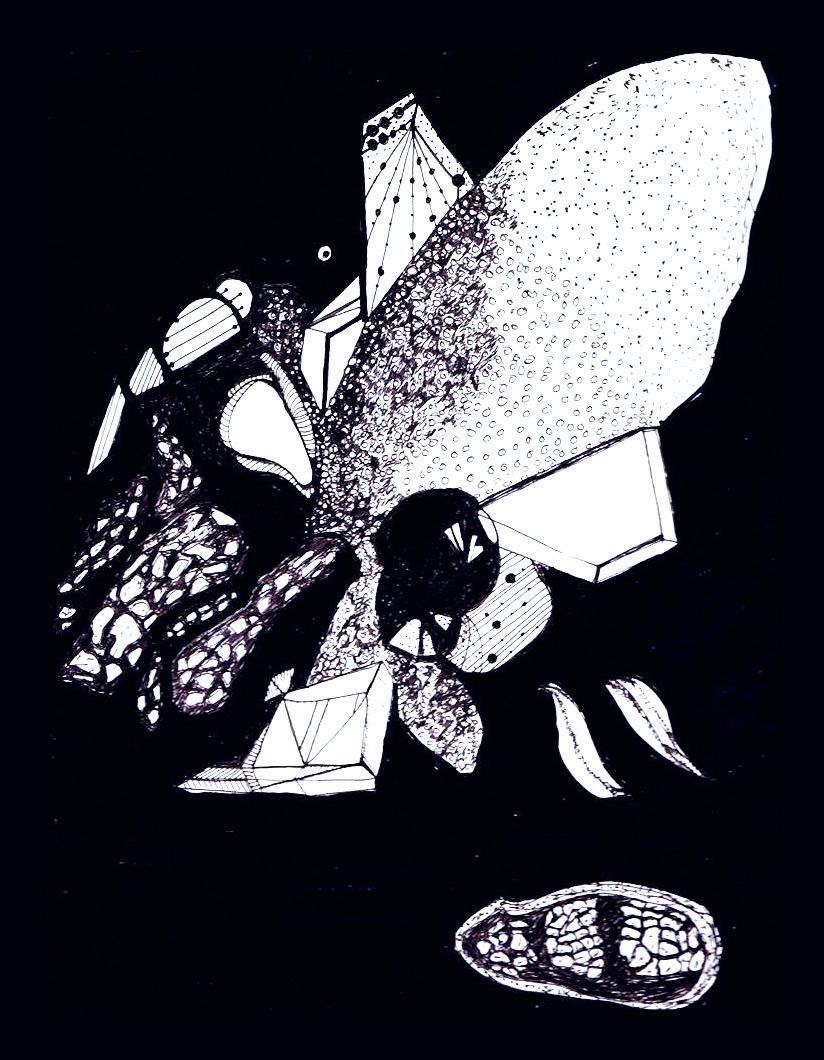
8 minute read
New Paradigms in Clinical Research:
Early Access Programs and Clinical Trials for Unmet Medical Needs
by Andrea Buschiazzo, MD
Advertisement
Despite a number of novel therapies having gained worldwide approval in recent years, there are still several diseases for which unmet medical needs persist. For this reason, there has been a dramatic increase in the approval of new medicines by the Food and Drug Administration (FDA) and the European Medicines Agency (EMA). The authorization for commercializing these new drugs is based on the data reported by pharmaceutical companies through their research, which resulted in the development of novel therapeutic approaches, such as new monoclonal antibodies for the treatment of autoimmune diseases and anticancer drugs that act on genetic biomarkers.
For patients with serious or life-threatening diseases who have failed to respond to the available treatment options and who are not eligible for participation in clinical trials, Early Access Programs (EAPs) provide access to investigational therapies (prelaunch and/or prior to country approval). Since they are governed by different regulatory authorities, EAPs vary by country. It is a program that may be implemented at different levels of the
product life cycle, during the regulatory submission process and prior to marketing authorization. Through this program, patients who demonstrate unmet medical needs can receive promising new treatments. Certain challenges should be considered, however, such as the high risk related to drug safety, high costs, and concerns regarding access.
The Challenges of New Paradigms in Clinical Research EAPs should be applied only in fully justified circumstances in order to ensure that the patient’s unmet medical needs are addressed. The majority of EAPs are based on surrogate endpoints, with less data related to efficacy, safety, and quality of life. However, the interpretation of data from clinical studies is critical. It is common knowledge that several drugs that were approved via fast-track procedures by the FDA were withdrawn for safety reasons; this was the case with rofecoxib (VIOXX®), which was withdrawn due to an increased risk of cardiovascular events.
Conclusion Despite the progress made in the field of clinical research, unmet therapeutic needs are still identified in several clinical areas (Miller, 2009; Taiwo et al. 2010; Aceves, 2014; Markowitz, 2015; Morrow et al. 2017). Although EAPs improve the patient’s access to new medicines, data on their true effectiveness and safety could be a concern. The active participation of patients in clinical research studies will improve the reliability of trial results and lead to a better real-world approach.
Lastly, in order to further implement clinical research, a strengthening in research infrastructure and training is needed to speed up the marketing process.
Purpose
Criteria
Sponsor
Drug Development Phase Early Access Programs

Clinical Trials
Allow patients who have failed with all available approved medicines to have access to medicines still in development. Evaluate safety and efficacy of a new medical treatment or a new indication
Physicians’ discretion for patients with unmet medical needs
Physicians
Late Phase II and onwards Protocol-specific requirements
Pharmaceutical and Biotech companies in research centers
Starts from Phase I and onwards
There are four substantial differences between Clinical Trials and Early Access Programs.
References: Fountzilas E, Said R & Apostolia M, Tsimberidou AM. Expanded Access to Investigational Drugs: Balancing Patient Safety with Potential Therapeutic Benefits. Expert Opin Investig Drugs. 2018 Feb;27(2):155-162. doi: 10.1080/13543784.2018.1430137.
Miller, C. E. (2009). Unmet therapeutic needs for uterine myomas. J. Minim. Invasive Gynecol. 16, 11–21. doi: 10.1016/j.jmig.2008.08.015
Papaluca, M., Greco, M., Tognana, E., Ehmann, F., and Saint-Raymond, A. (2015). White spots in pharmaceutical pipelines-EMA identifies potential areas of unmet medical needs. Expert Rev. Clin. Pharmacol. 8, 353–360. doi: 10.1586/17512433.2015.1028918. Andrea Paula Buschiazzo, MD Board Certified Rheumatologist, with over 25 years in clinical and academic Rheumatology. Over 25 years’ experience in Pharmaceutical Industry, and with CROs.
Therapeutic Experience in Rheumatology/Autoimmune diseases (SLE, RA, Psoriatic Arthritis, Spondyloatrhritis, Gout, Paget, Sjogren, Vasculitis, Juvenile Arthritis, Scleroderma, Osteoporosis, Osteoarthritis, Fibromyalgia, and Biosimilar Studies) and others areas such as Infections diseases, Cardiovascular, CNS, Metabolic diseases, Vaccines, Urology, Psychiatry, Gastroenterology, Ophthalmology, Women& Health, Pediatric diseases, Nephrology, Dermatology, Hematology, Oncology)
Age-relAted PAin

Are complaints about pain to be expected among the elderly?
by Thor Nissen, MD, PhD

There are a variety of definitions of pain. This indicates that no one definition comprises the many components associated with this highly personal, subjective, and vivid phenomenon, which is experienced by every human being, starting soon after conception and persisting until the ceasing of all organic functions. According to the International Association for the Study of Pain (IASP), pain is: “An unpleasant sensory and emotional experience associated with actual or potential tissue damage, or described in terms of such damage (1).” Moreover, with general human life expectancy rising to 70 for men and 75 for women, there are more and more people each day who reach old age (2).
So, how are aging and pain connected? Both are generally considered unpleasant, even if it is understood that they are unavoidable and are ordinarily a natural warning sign of actual or potential damage. Furthermore, they both include an emotional component where state of mind, attitude, and attitude, and beliefs —among other adaptative processes— can serve to exacerbate or alleviate the experience.
Pain is recognized as a common and highly prevalent symptom in older adults. It is likewise possible that pain goes underreported in the elderly, due to an incorrect belief that it is an inevitable part of aging (3). The lack of systematic epidemiological investigation makes it difficult to accurately esti-

mate the frequency of issues with pain for this demographic (4). Elderly people suffer from different kinds of conditions associated or coexisting with pain: progressive degenerative processes (e. g., arthrosis, osteoarthritis, degenerative spinal changes), cancer, polymorbidity (e.g., diabetes mellitus, vascular disease), declining immune competence, polyneuropathy, and other neuralgias. Insufficiently treated chronic or periodically reoccurring pain can lead to serious interferences with physical, cognitive, and everyday social abilities —and as such, to a limited quality of life. Due to existing comorbidity, polypharmacy, and impaired organ function, adequate pain treatment for the elderly goes beyond the boundaries set for younger individuals. Moreover, underqualified medical management and complicated pain capture in cognitive affected patients (5) results in significantly fewer analgesics being prescribed to the aging population. Published papers have found statistically significant differences in pain sensitivity response between old and younger adults, but the direction of change was inconsistent (6).
The relationship between pain and other neuropsychiatric or organic disorders remains controversial, with evidence supporting both increased and decreased unpleasantness and emotional responsiveness in, for example, people with dementia, in comparison with healthy controls (7).
Non-pharmacologic treatment of pain in the elderly plays an important role, as well, with psychological support and adequate exercise showing benefits up to the level of the endocannabinoid system (8,9,10).
Pain is not a must as people grow old. However, certain painful conditions are more prevalent in the elderly, such as chronic pain. Age-related cellular and organ changes are being studied as possible treatment targets in addressing both aging and pain (11,12,13,14).
The real “must” is the comprehensive management of such conditions, always placing the emphasis on a sensible, customized, and successful analgesic approach (15).

References: 1 Treede RD. The International Association for the Study of Pain definition of pain: as valid in 2018 as in 1979, but in need of regularly updated footnotes. Pain Rep. 2018; 3(2):e643. Published 2018 Mar 5. doi:10.1097/PR9.0000000000000643 2 Life expectancy by continent and gender 2019 Published by Erin Duffin, Sep 20, 2019 in Statista https://bit.ly/2v3CM5d 3 Prostran M, Vujović KS, Vučković S, et al. Pharmacotherapy of Pain in the Older Population: The Place of Opioids. Front Aging Neurosci. 2016;8:144. Published 2016 Jun 16. doi:10.3389/ fnagi.2016.00144 4 Mobily PR, Herr KA, Clark MK, Wallace RB. An Epidemiologic Analysis of Pain in the Elderly. Journal of Aging and Health. 2016; 6(2):139-154. doi:10.1177/089826439400600201 5 Eiche J, Schache F. Pain Management in geriatric patients. DMW -Deutsche Medizinische Wochenschrift. 2016;141(9):635-641. doi:10.1055/s-0041-106307 6 El Tumi H, Johnson MI, Dantas PBF, Maynard MJ, Tashani OA. Age‐related changes in pain sensitivity in healthy humans: A systematic review with meta‐analysis. European Journal of Pain. 2017; 21(6):955-964. doi:10.1002/ejp.1011 7 Gagliese, Gauthier, Narain, Freedman. Pain, aging and dementia: Towards a biopsychosocial model. Progress in Neuropsychopharmacology & Biological Psychiatry. 2018; 87:207-215. doi:10.1016/j.pnpbp.2017.09.022 8 Arewasikporn A, Roepke AM, Turner AP, et al. Goal Pursuit, Goal Adjustment, and Pain in Middle-Aged Adults Aging With Physical Disability. Journal of Aging and Health. 2019;31:214S-240S. doi:10.1177/0898264319827142 9 Zou L, Zhang Y, Liu Y, et al. The Effects of Tai Chi Chuan Versus Core Stability Training on Lower-Limb Neuromuscular Function in Aging Individuals with Non-Specific Chronic Lower Back Pain. Medicina. 2019;55(3). doi:10.3390/medicina55030060 10 Watkins. Endocannabinoids, exercise, pain, and a path to health with aging. Molecular Aspects of Medicine. 2018;64:68-78. doi:10.1016/j.mam.2018.10.001 11 Cruz-Almeida Y, Fillingim RB, Riley JL, et al. Chronic pain is associated with a brain aging biomarker in community-dwelling older adults. Pain. 2019;160(5):1119-1130. doi:10.1097/j. pain.0000000000001491 12 Johnson AJ, Terry E, Bartley EJ, et al. Resilience factors may buffer cellular aging in indi- viduals with and without chronic knee pain. Molecular Pain. 2019;15:1744806919842962. doi:10.1177/1744806919842962 13 Hackett J, Naugle KE, Naugle KM. The Decline of Endogenous Pain Modulation With Aging: A Meta-Analysis of Temporal Summation and Conditioned Pain Modulation. Journal of Pain, The. 9999. doi:10.1016/j.jpain.2019.09.005 14 Cruz-Almeida Y, Sinha P, Rani A, Huo Z, Fillingim RB, Foster T. Epigenetic aging is associated with clinical and experimental pain in community-dwelling older adults. Molecular Pain. 2019;15:174480691987181. doi:10.1177/1744806919871819 15 Walco, Krane, Schmader, Weiner. Applying a Lifespan Developmental Perspective to Chronic Pain: Pediatrics to Geriatrics. Journal of Pain, The. 2016;17(9):T108-T117. doi:10.1016/j. jpain.2015.11.003









